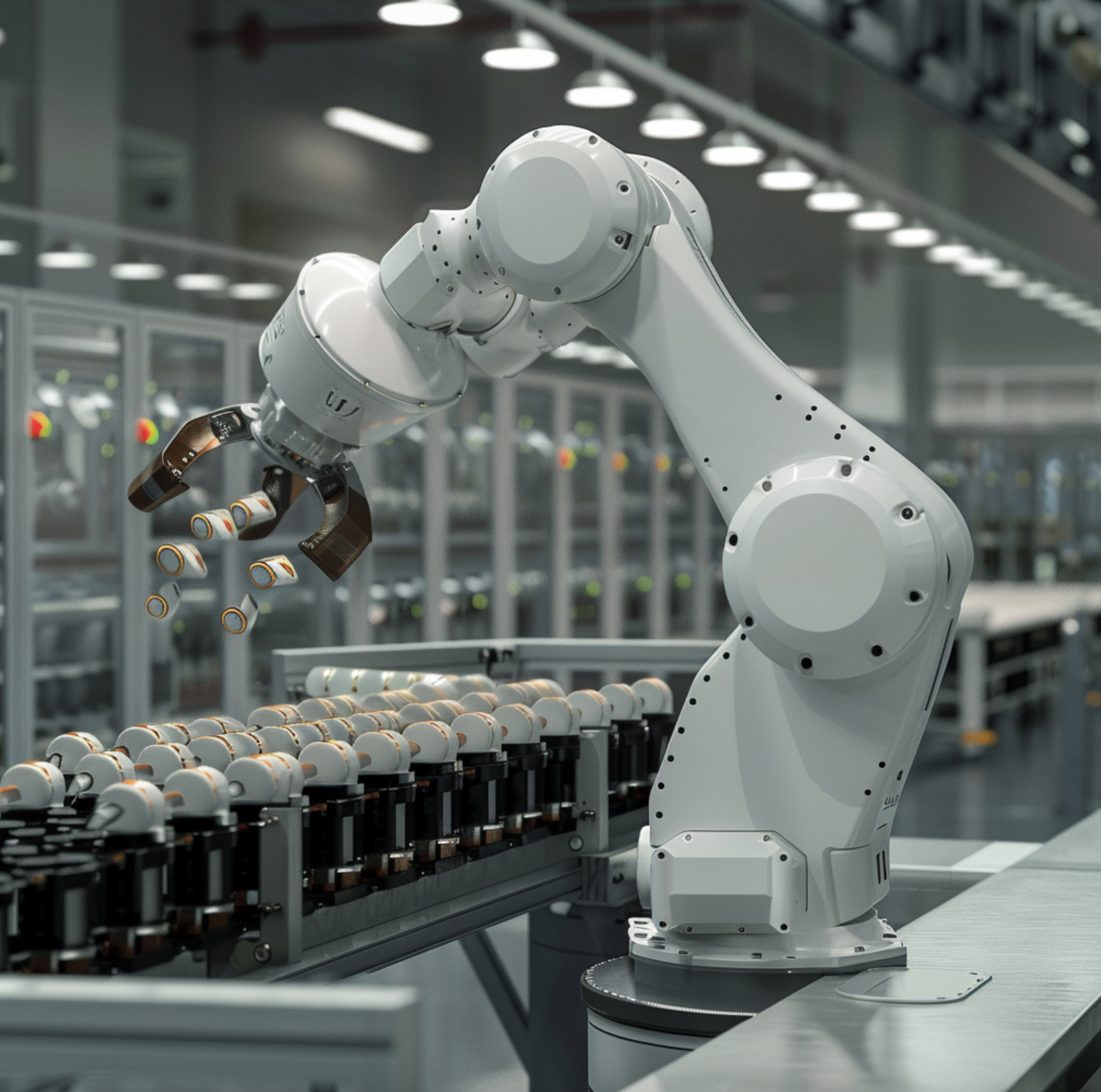

Part-picking robots are automated machines designed to pick and place parts for assembly.
They use robotic arms and grippers to select parts from bins and trays, organize them, and transfer them to the assembly line – where humans or other robots finish the job.
Part-picking robots use end-of-arm tooling like suction cups, grippers, or vacuum pumps to grab parts.
They rely on machine vision systems and sensors to detect the orientation and position of parts in bins. The robot is pre-programmed with the optimal picking sequence to maximize efficiency.
These robots can determine the best path to grab and move parts by using sophisticated algorithms and 3D simulation software. They’re extremely accurate, with placement precision down to 0.1mm, and some can pick as many as 120 parts per minute.
The most common types are Cartesian coordinate robots, SCARA robots, and Six-Axis Articulated arm robots.
Cartesian robots move in a linear X, Y, and Z motion, ideal for simple pick and place tasks; SCARA robots have a cylindrical work envelope and are very fast, perfect for high-volume production; and Six-Axis robots are the most flexible – although all save for the most modern ones can be hard to program.
Part-picking robots are already being widely used across a huge range of industries.
Check out how they’re doing, ranked from best to worst (we had to make it interesting):
All in all, the usefulness of Part-picking robots across a variety of industries pretty much speaks for itself.
Not so fast! While it may be tempting to go buying the first robot that you see on Google, there are several key factors you should consider before making a purchase.
They are:
Armed with these, it will be much easier to make an informed choice. Automating your Part-picking robot is a significant investment, but one that typically pays for itself in just 1-3 years!

It’s no surprise that in 2024, there’s a huge variety of Part-picking robot manufacturers making the rounds.
While many already produce robots for assembly and packaging, Part-picking is a natural extension of their offerings.
Some of the leaders in this space are:
Emerging from the US, Standard Bots has quickly become a noteworthy player in the field of industrial robotics, despite being relatively new to the scene.
Their pride and joy, RO1, a Collaborative robot (or Cobot), demonstrates exceptional proficiency in a variety of Part-picking tasks, as well as other jobs like Machine Tending, Palletizing, and quality control (QC).
The RO1 sets itself apart with its highly adaptable nature and cost-effective price, capable of being tailored to fit the specific needs of different operations.
ABB has been in the robotics game for a long time, and they’re also a leader in industrial automation
They produce a range of Part-Picking robots under their YuMi line. These Cobots are designed to work alongside humans and can handle the skilled tasks required for Part-picking.
One thing going for ABB is experience; their Part-Picking robots are cutting-edge, fast, and as accurate as can be.
If you’ve heard about robotics, it’s very likely that you know who FANUC is.
Their robots are well-known for their high precision, reliability, and customization. FANUC produces a range of Part-Picking robots that use advanced machine vision to identify, pick, and place components quickly and accurately.
They have solutions for everything from basic pick and place to complicated bin picking where the robot must search a jumbled bin of parts to find the right one – like that perfect Lego piece when you were a kid.
Now you know the ins and outs of Part-picking robots. From how they work to the top manufacturers, you're ready to find the right bot for you.
Remember: Keep all of the essential factors in mind as you search, like price, use case, environment, finding the right manufacturer, and staff training (to ensure an orderly transition to automation).
Then watch your processes improve as this clever automation takes over repetitive tasks!
Looking to elevate your Part-picking capabilities? RO1 by Standard Bots is the premier choice for organizations across the spectrum, from nimble startups to sprawling industrial operations.
Connect with our solutions team for an obligation-free, 30-day trial in your workspace, complete with professional guidance for smooth RO1 integration into your part-picking routine.